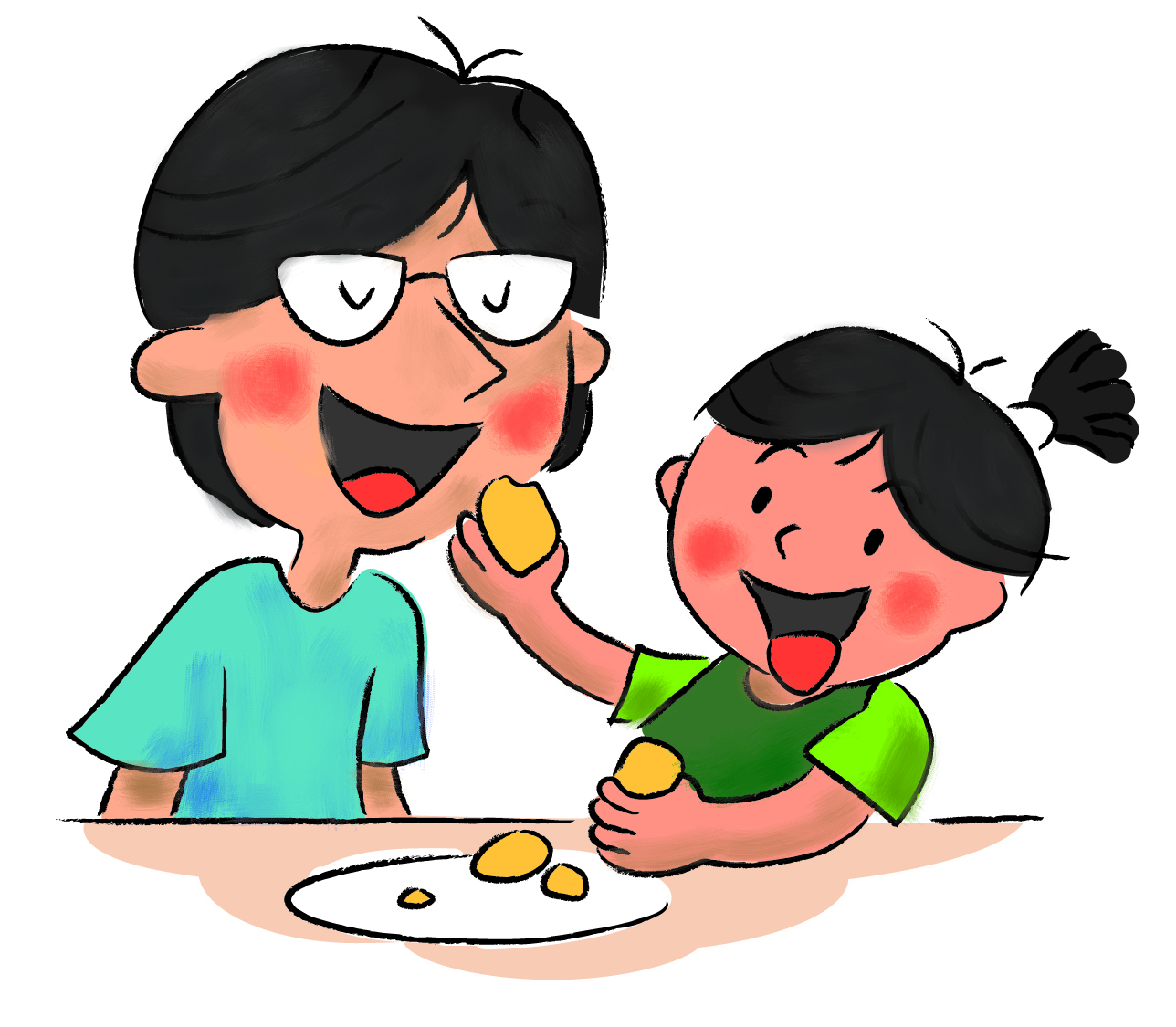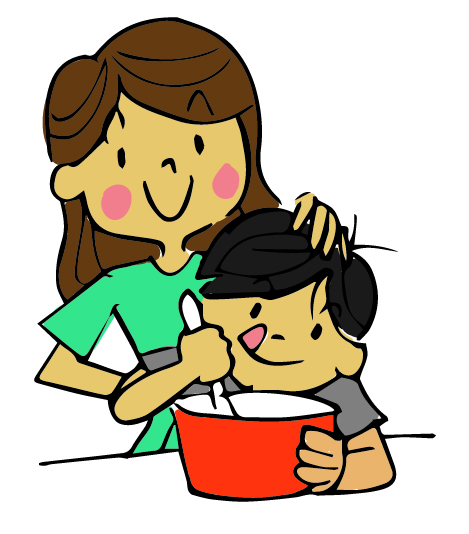
As you make this bread together, relate it to the story. For example, “The Little Red Hen must be very sad and mad. No one wants to help her bake the bread. That makes me sad, too. Let’s help her bake some bread!”
What You Need:
- 2 1/2cups very warm water
- 2Tbsp dry active yeast
- 1/4cup sugar
- 1Tbsp salt
- 1Tbsp vegetable oil
- 6cups all-purpose flour
- 1Tbsp butter
What To Do:
- Dump water, yeast, and sugar into a large bowl. Stir until yeast is dissolved.
- Stir in salt, oil and flour until mixing becomes too difficult, then knead for 2 minutes on a floured surface.
- Spray a large bowl with non-stick cooking spray and place dough in the bowl. Cover with a dish towel and let it rise until it doubles in size.
- Dump dough out onto a floured surface. Cut in half and shape into 2 smooth, bread loaf like shapes.
- Place dough loaves on a greased cookie sheet and let rise again until doubled (about 25-30 minutes).
- Bake at 375 degrees for 20-30 minutes, or until the top is golden brown and the bread sounds hollow when tapped.
- Remove bread from oven and rub butter on top.
From: https://www.toddlertestkitchen.com/cooking-toddlers-easy-french-bread/

After reading the story The Ugly Duckling, have your child act it out as you narrate.
What You Need:
- Optional music (e.g., Winter into Spring Album by George Winston)
What To Do:
- After reading the story The Ugly Duckling, tell your child that you will tell the story again but this time, he will act it out. (optional: play soft instrumental music as you narrate).
- Have the child act out different parts of the story:
- Baby duck hatching out of an egg
- Waddling with other ducks
- Being teased by the other ducks
- Flying with swans
- For each part of the story, emphasize the action but also the feelings the duckling is feeling. For example, “You’re in your egg and it’s dark. You feel nervous and scared. It’s time to come out! Peck on your shell with your beak. Stick out one foot, then the other, one wing then the other. Shake your feathers! You’re excited!”

After reading Goldilocks and the Three Bears, tell the child that he will have the chance to make porridge pops!
What You Need:
- Ingredients: 1 cup oats, 2/3 cup toasted shredded coconut, ½ cup peanut butter*, ½ cup mini chocolate chips, 1/3 cup honey, 1 T. chia seeds, 1 tsp vanilla
- Equipment: mixing bowl, spatula, measuring spoons, cookie tray, wax paper or parchment paper
*substitute nut butter or tahini for a peanut allergy
What To Do:
- After reading Goldilocks and the Three Bears, tell the child that he will have the chance to make porridge pops!
- Help your child measure and combine all the ingredients together and mix.
- Line the cookie tray with wax or parchment paper.
- Together make 1-2” size balls out of the dough. Talk about how the child feels. For example, “You are smiling and laughing. You must be excited to make porridge pops!”
- Help your child line the balls on the cookie tray.
- Refrigerate until the balls are firm.
- It’s time to eat the porridge pops! Connect it to the story by asking if he thinks the bears would’ve enjoyed porridge pops.

Make a book with photos of familiar faces displaying different emotions to help your baby develop emotional literacy.
What You Need:
- Glue
- Cardboard (such as cereal boxes)
- Clear, adhesive contact paper (optional)
- Yarn or ribbon
- Photos of your baby, family members or close friends displaying different emotions -- such as sadness, happiness, fear, excitement, anger, etc.
What To Do:
- Cut the cardboard into equal size pages.
- Glue a different photo onto each cardboard page.
- Make holes on the side of each page and thread yarn or ribbon through the holes; tie the pages together.
- Hold your baby and show him the photos. Point to each photo and talk about it. For example say, “Who’s that? That’s sister! Sister is laughing because she is happy.”
- Read the book often. It is sure to be one of baby’s favorites!
Optional: Cover each page with clear contact paper to make the book last longer.






